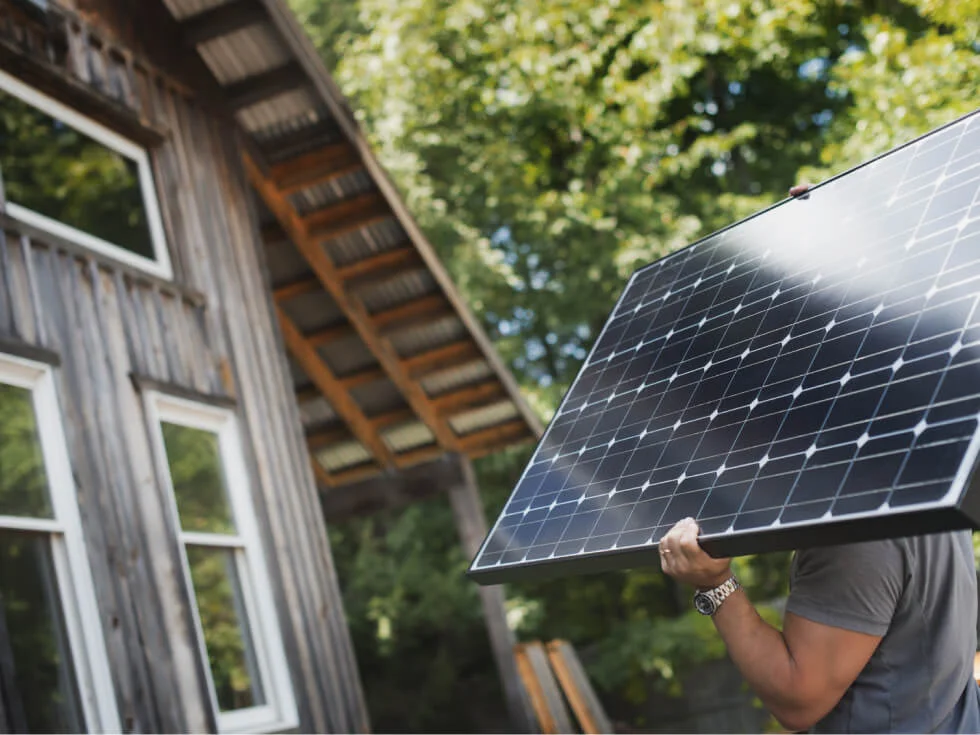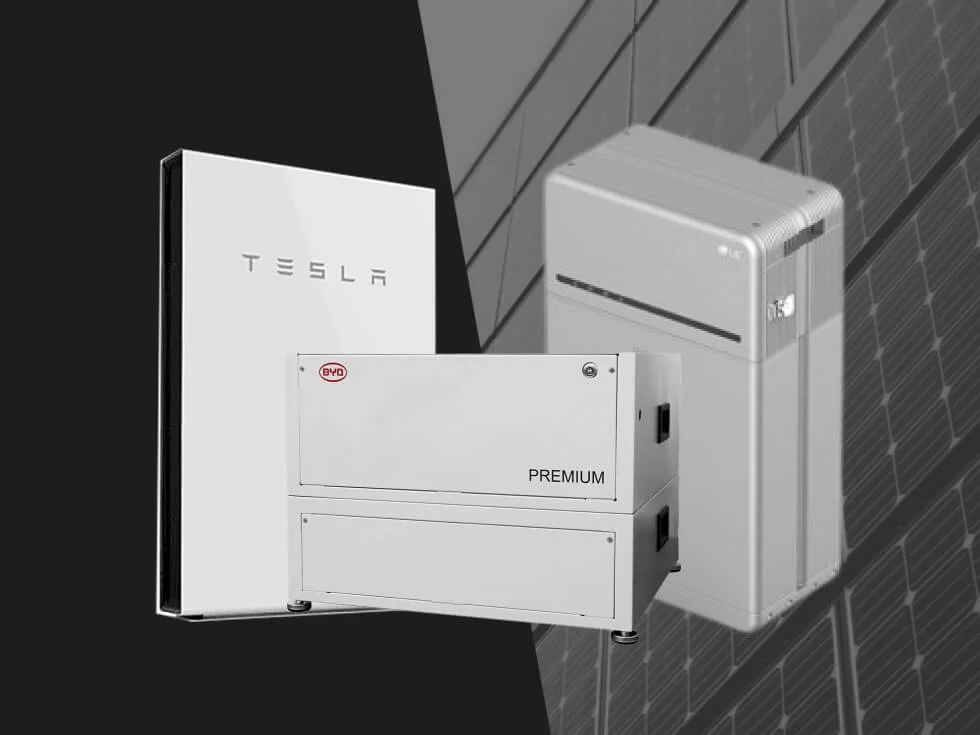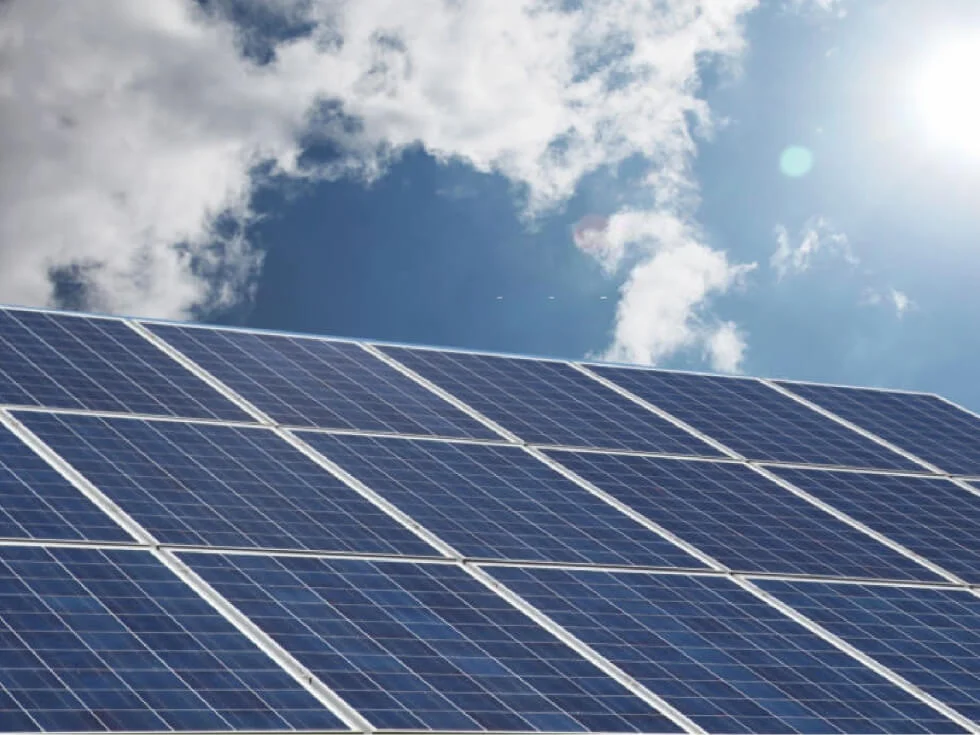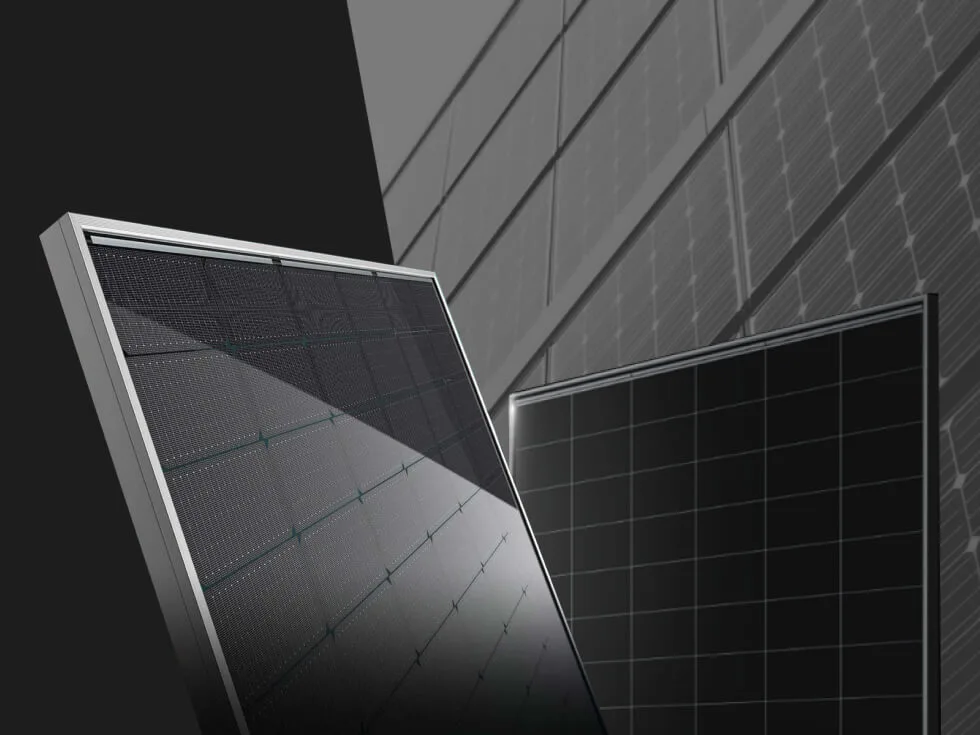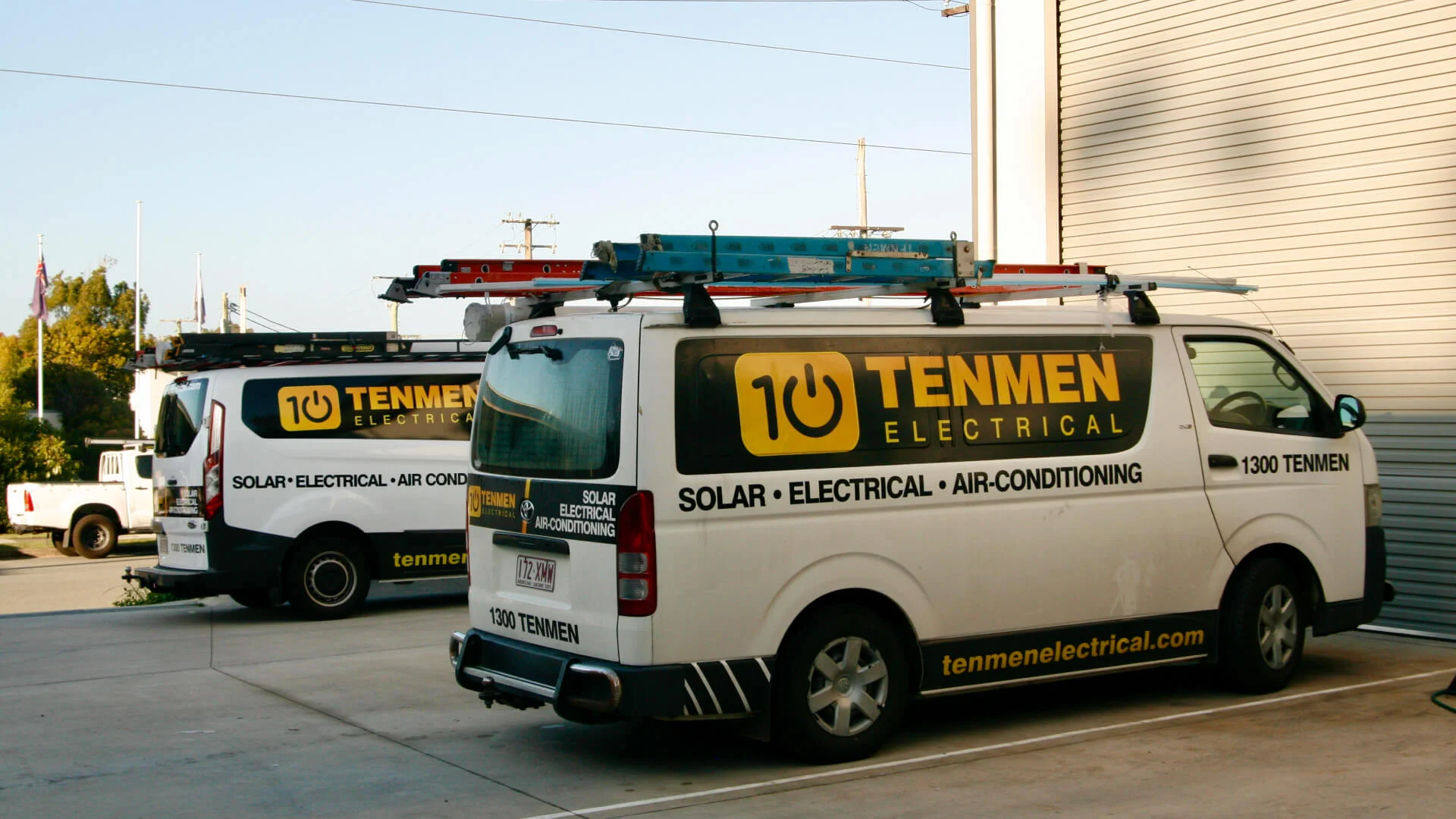How To Choose The Best Solar Panels
If you have already decided to install a solar system in your home and want to make sure that you pick the correct solar panels, you are in the right place!
This guide will guide you through all the things you should consider when installing a solar system in your home. Make sure you read it thoroughly to the end so you can be confident that the panels you install are the best and will give you the best results for your household needs.
STEP 1: Choose the right Solar Panels
It’s essential to get a Solar System that best adapts to your home’s needs.
I have come across cases where clients came to me because they got the wrong Solar panels installed and had to replace the entire installation. This kind of mistake can make you waste thousands of dollars. To avoid that, it’s crucial that you have a clear idea of which solar panels are best for your particular situation.
We will answer the most frequently asked questions, focusing on using and installing solar panels for residential homes. However, if you have any further questions or need information for your business, do not hesitate to contact us. We will be happy to help you.
How do solar panels work?
Before we go into more depth, it’s important to understand each of the components of a solar system and their main function.
I talked about this in our previous article “It’s solar power worth it in 2020?”, but I’ll do a quick recap here so you can easily follow this guide.
Solar panels generate energy for our homes in the following ways:
- The sun’s rays heat the solar panels, which convert this solar energy into direct current.
- The direct current is collected by the inverter and converted to alternating current, which is how electricity is normally consumed.
- Then, the electricity is distributed among the different electronic devices in your house. If your solar panels do not meet the needs of these devices, you will receive energy from the conventional electrical system.
- Last, if your solar system produces more energy than necessary, it sends the excess to the electrical system, and you can sell it to the electricity providers.

So, this is the basic operation of a solar system. However, if you want to go into more depth, watch this video by Richard Komp where he explains how solar panels transform solar energy into electrical energy.
Types of solar panels
Before going into more detail about the best solar panels for your home, it’s essential to understand that there are several types of solar panels. Their functionality differentiates them. So, depending on what you need solar energy for, you will have to choose one type or another.
Thermal Solar Panels
This type of solar panel has the function of transforming solar energy into thermal energy that is used to heat fluids (usually water), which are stored in a collector. There are two types of thermal panels:
- Flat-plate collector
- Evacuated (or vacuum) tube collectors

Thermal Solar Panels are mainly used to heat sanitary water, swimming pools, or for some type of low-temperature heating systems.
Photovoltaic Solar Panels
This type of panel collects solar energy and transforms it into electricity. The energy production depends on the quality of the panel. We can find two types of photovoltaic panels:
- Photovoltaic Monocrystalline (mono)
- Photovoltaic Polycrystalline (poly)

Photovoltaic Solar Panels are mainly used to generate electricity.
Hybrid Solar Panels
As the name indicates, it’s a hybrid panel that combines photovoltaic and thermal on the same panel. It can generate both heat and electricity at the same time.
They are not as common as the first two and finding them can be quite tricky.

It’s the newest technology so the cost can be very high, which is why they are used especially in commercial buildings such as hospitals and clinics.
In Australia, the most popular panels currently used in residential homes are Photovoltaic Solar Panels that can be either monocrystalline or polycrystalline.
Monocrystalline or Polycrystalline Solar Panels?
At Tenmen, our clients constantly ask us what’s the difference between the options of photovoltaic solar panels and what we recommend. We will quickly explain the differences and when you should choose one or the other.
To put you in context, Solar panels are made up of solar cells, which are made of Silicon. Silicon is the second most abundant element in the earth’s crust. The transformation process of this mineral can give rise to Monocrystalline or Polycrystalline Silicon.
Monocrystralline
This is the oldest and most developed of the two technologies. Monocrystalline panels, as the name implies, are created from a single continuous glass structure. A monocrystalline panel can be identified from solar cells that appear as a single flat colour.
Polycrystalline
Polycrystalline Solar Panels are a newer technology and vary in the manufacturing process.
They also start as a ‘seed’ silicon crystal placed in a molten silicon tub. However, instead of extracting the silicon crystal seed as in the Monocrystallines, the silicon tub is simply allowed to cool. This is what forms the distinctive edges and grains in solar cells.
How do I differentiate them?
Monocrystalline solar panels tend to be darker in colour, often black or dark grey, while polycrystalline solar panels have a dark blue colour when exposed to light.

In the table below you can see a quick comparison of the advantages and disadvantages of polycrystalline and monocrystalline solar panels:
| Panel Type | Advantages | Disadvantages |
|---|---|---|
| Monocrystalline | – High efficiency – Space efficient – Have a long lifespan – Tend to be more efficient in warm weather | – Higher cost – Less sustainable |
| Polycrystalline | – Easier production – Lower cost | – Efficiency of panels – Lower space-efficiency |
If you have a lot of space for solar panels, you could save money upfront by installing low-efficiency, low-cost polycrystalline panels. However, roofs with limited space might require installing high-efficiency, monocrystalline solar panels. Therefore, it’s always best to consult a solar expert who can advise you.
What size Solar Panels do I need?
There is no one-size-fits-all when it comes to solar panels. However, giving a closed answer to this question without a previous household energy assessment, it’s complicated.
The power of the system you’ll need depends on several factors, such as:
- The energy consumption of your home:
This is the first aspect that you should check. Without this information, it would be pretty much like gambling. Instead, you should look at the kWh you consume in your home to determine how many kWh you need.
- The surface available to place the solar panels on your roof:
Another critical factor that is often overlooked. It’s useless to have correctly calculated the number of panels you need if later you do not have enough space on the roof.
- The orientation of your roof:
Very fundamental too. For us living in Australia, the more space available facing North (North-East, North-West), the better. The more oriented to the South, the less you will be able to take advantage of it.
As I said before, giving you a closed answer would be a mistake because each situation is different. However, if you want to make an estimate, start by looking at how many kilowatt hours (kWh) of electricity you use in a day. For example, an Australian family can consume around 8,760 kWh per year (24kWh/day)
Now, let’s look at solar panels. Each kW of solar you install will produce around 4 – 4.5 kWh daily. Just divide your daily consumption by this amount to calculate the system size you need.
E.g.: 24 kWh (average daily consumption) / 4 kWh (solar panel production) = 6 (kW system)
A house with an average consumption of 9,000 kWh of electricity per year (24 kWh/day) will require a solar system of at least 6 kWh to fully offset the electricity.
I created this table to give you an approximate idea of the number of solar panels and the size of the installation. Remember that these numbers are approximate and that there are several factors that can affect the actual size of your system.
| Size of the system | Number of panels | Power generated | Roof space |
|---|---|---|---|
| 3kWh | 10 | 13 kWh/day | 20-25 m2 |
| 4kWh | 13 | 18 kWh/day | 25-30 m2 |
| 5kWh | 17 | 22 kWh/day | 25-30 m2 |
| 6kWh | 20 | 26 kWh/day | 30-40 m2 |
| 7kWh | 23 | 31 kWh/day | 35-45 m2 |
| 8kWh | 27 | 35 kWh/day | 35-45 m2 |
| 9kWh | 30 | 40 kWh/day | 55-60 m2 |
| 10kWh | 33 | 44 kWh/day | 55-60 m2 |
Which solar panels are the best?
When looking for Solar Power for your home, you want to focus on some aspects to make sure you decide on the right system:
- Clean Energy Council Approved.
The Clean Energy Council is the foremost clean energy accrediting body in Australia. If you want to ensure that your solar panels are safe and good quality, get modules approved by the Clean Energy Council. You can check the list here.
- Solar Panel Efficiency.
The efficiency of the solar panel is the percentage of solar energy that the panel can convert into electricity. The higher the efficiency (measured in %), the more watts of electricity you will get per square meter of the solar panel.
- Solar Panel Cost.
Generally, like many things in life, you get what you pay for. So be careful when choosing your solar panels based only on the price. This could lead to poor performance and reliability.
- Warranty:
We’ll talk about the warranty below, but remember to pay close attention to the fine print concerning issues that you might have with solar panels in the future.
There are several options for solar panels in the market. Here’s a list of some of the top solar panel brands in Australia that we recommend:
- REC
- LG Solar
- Hyundai
- Sunpower
- Tindo Solar
- Winaico
- Canadian Solar
- JinkoSolar
- Longisolar
- JASolar
- Trina Solar
- QCells
- Suntech
Tenmen Electrical only works with leading brands in Solar Power and we have this comparison that we show to our clients so they can easily understand what are the best options for them. Additionally, check our analysis of the best solar panels available in the market.

How much does a Solar System cost?
A Solar System is like your eye’s fingerprint or iris: no two are the same.
Likewise, every solar system is designed according to each home or business’s unique needs and circumstances.
For this reason, it’s so difficult to find an accurate price without first having your situation evaluated by an expert.
But we can show you an approximate cost for each size to get an idea of the average cost of a Solar System in Australia.
| System Size | Cost | Avg. Payback Period |
|---|---|---|
| 3kW | $2,990 to $5,490 | 3 years |
| 4kW | $3,660 to $6,900 | 3 to 4 years |
| 5kW | $3,990 to $8,000 | 2.5 to 4 years |
| 6kW | $3,990 to $9000 | 2.5 to 4 years |
| 7kW | $7,300 to $10,900 | 2.5 to 4 years |
| 10kW | $9,900 and $14,300 | 2 to 5 years |
* The total price does not include the upfront financial incentives (STC) provided by the Government.
How long should the warranty be?
First, you should know that a solar panel has two types of warranty: one for performance and another for the product itself.
- The performance warranty of a solar panel usually guarantees 90% of the production at ten years and 80% at 25 years.
- The product warranty generally guarantees 10-12 years without failure. This warranty covers the integrity of the panel and problems such as manufacturing defects, premature wear, etc.
The small print of solar panels
We have already seen the two types of warranty that solar panel manufacturers offer in their products, but don’t you find the gap between the duration of the warranties strange? For example, if a manufacturer guarantees that the solar panel will give 80% at 25 years, why is the product defect warranty only ten years?
What does this mean?
Very simple. If your solar panel, 10-12 years old and with the product warranty expired, has the junction box broken or the glass cracked, it will not be able to produce energy, or it will be minimal. However, the performance warranty will not cover that problem because it’s considered a product failure.
That is why it’s so important to choose solar panels that have the same warranty, for both the product and the performance. For example, 20 years manufacturer warranty + 20 years product warranty.
Do Solar Panels require maintenance?
The photovoltaic cells that make up the solar panels are silicon, a mineral highly resistant to aggressive weather agents such as hail. Therefore, paying much attention to the maintenance of solar panels in residential installations is not necessary.
To observe any variations in your installation and anticipate possible issues or incidents, we recommend placing performance monitoring devices.
In most cases, solar panels are cleaned directly in the rain. However, in areas with high wind, high contamination, dust and dirt, the production can decrease up to 15% over the lifetime of the solar panel installation. To mitigate this effect, it’s necessary to clean the solar panels once or twice a year.
Which direction should my solar panels face?
When solar took off around ten years ago, we did our best with our information. One common conclusion we were all told was that north-facing was the only way, but there is more than one way to skin a cat..
The sun rises from the east and sets in the west, so by having a system evenly split between east-west panels, we can achieve the same amount of daily production of a north-facing roof. But sometimes, when there are no other options, having panels on a south-facing roof can still yield results!
What are Tier 1 Solar Panels?
Bloomberg Tier 1 is a list of photovoltaic panel manufacturers classified according to their “solvency and ability to finance”. This list is updated every 3 months. To be listed in Tier 1, a manufacturer must have supplied at least 5 projects of at least 5MW and have been funded by 5 different banks. That’s it.
That last expression: “That’s it” is highlighted because it reveals something that any professional in the sector that is not related to the commercial branch, but rather to the technical branch, will always confirm the following: Tier 1 has no validity from a technical point of view, neither for performance nor for quality of solar panels.
STEP 2: Choose the right Inverter
What is a Solar Inverter?
A solar inverter is the part of the solar system that is responsible for transforming the energy produced in a solar system installation, which is transmitted in the form of direct current (DC), into alternating current (AC), so that household appliances and other electrical products can operate at their normal levels.

Types of Solar Inverters
Probably you have doubts about which type of solar inverter is best for your home. Although they all have the same function, there are some differences.
I will quickly explain what each of the three main solar inverters consists of and two critical additional components to get the most out of your solar panels.
String inverters (most common)
String inverters are used when solar panels are connected in series, sending all power to a single inverter. They are ideal for houses with roofs without obstacles or shadows.
String inverters are the lowest cost option and are easy to maintain.
Hybrid inverters (best for using with battery)
Hybrid are string inverters that allow the use of the conventional electrical network and the use of batteries. They provide great versatility to the installation of a home. For this reason, we can say that hybrid inverters are the future of solar self-consumption installations with batteries.
Prices for hybrid inverters can be higher than regular string inverters, but recently, the prices of hybrid models have fallen in line with regular inverters.
Microinverters (best for roofs with shades)
Microinverters, unlike string inverters, are installed in each solar panel, acting as an independent converter that transforms the direct current into an alternating current.
Microinverters correct the problem of the negative impact that shadows produce on string inverters by measuring production individually. Microinverters allow the monitoring of each solar panel.
These are two other complements that you should consider:
Power optimisers (complement to help with shaded panels)
Power optimisers are not inverters, but can be fitted to a system with strings of panels and a string inverter. Their function is to reduce the losses of a photovoltaic solar system, increasing the efficiency of the photovoltaic installation.
They are usually used as a complement to string inverters or microinverters, helping the photovoltaic panels. When energy production is affected by shade, the power optimizer will increase the production.
The difference with the microinverters is that the power optimizers perform the current conversion in the inverter while the microinverters produce themselves.
Battery inverters (complement to connect the battery to the existing solar system)
If you already own a solar system but want to add a storage battery, instead of swapping out the inverter for a hybrid model, you could connect the battery to a dedicated battery inverter.
They turn the stored battery power into an alternate current (AC).
The solar inverter you need will vary depending on the type of solar system you want to install. If it’s still not clear, contact us and we will help you.
Smart modules, what are they?
Due to the rapid growth and demand for solar systems, manufacturers of power optimisers and solar panels have collaborated with the development of smart modules. They are the result of the integration of power optimisers or microinverters with solar panels.
Smart modules offer several advantages such as a simpler installation process and lower costs.
What to look for in a solar inverter?
It’s as critical to choose solar panels as it’s the inverter. When selecting the inverter for your solar installation, you must take into account the following characteristics:
- Maximum transformation power:
It’s the maximum amount of energy that the inverter will be able to transform, and it can be expressed in both (W) and (VA). Although the inverters have safety margins greater than the marked capacity, we must choose a suitable inverter model for the installation.
- Protection systems:
Solar inverters must be able to stop production in the event of a short circuit, grid, or component failure. If this is not possible, we must install a separate shutdown system.
- Optimization:
The inverter must optimize the solar production regardless of the shadows or the installed panel type. Therefore, we must choose which inverter is most appropriate for your home.
- Data register:
The generation of individualised production data will allow us to study which panels produce the least and solve the problem if there is one.
How to choose a Solar inverter?
Once you have decided on the type of solar inverter you need, the next step is to find an inverter brand that complies with the Australian Standard (AS4777). You can have a look at the list of the Clean Energy Council’s approved products here.
It’s important that the inverter you choose is on this list for two reasons:
- To make sure it’s reliable and
- To be eligible to benefit from Australia’s major solar subsidy. For that, the inverter must be on the list at the time of installation.
What solar inverter size should I buy?
When we talk about size, we are actually talking about capacity.
It’s important that you understand that an inverter has to be able to handle at least the maximum power of your solar system. This means that if you install a panel system that is 6kw, then you have to buy at least a 6kw inverter.
Which Solar inverters are the best?
Similar to solar panels, there are many options for inverters in the market. Here’s a list of some of the top brands that we recommend in Australia:
- Fronius
- SMA
- Solar Edge
- Sunpower
- Enphase
- ABB
- Sungrow
- Huawei
- Delta
- Goodwe
At Tenmen Electrical we only work with leading brands that we categorize in this way:

For an in-depth comparison of the top inverter brands, check our article: Best Solar Inverters.
STEP 3: Check if you need a battery
Do I need a battery for my Solar System?
We should all ask ourselves this question when we buy a photovoltaic solar system for our homes.
Batteries guarantee many advantages, such as the economic benefit, which conflicts with their main disadvantage: high prices.
So, is it worth investing in a solar battery for our solar system? Well, it depends on your situation. When batteries are installed, we can store the extra energy produced by the solar panels that are not consumed to be used later.
If you don’t have a battery, what happens at night when the solar panels are not producing energy is that you use the energy from the grid.
So, it’s up to you. If you want to be totally independent from the electric companies, I’d recommend buying a battery. On the other hand, if you consume most of the electricity during the day, maybe it would not be necessary. It all depends on your situation and preferences.
STEP 4: Find the right Solar Installer
Solar installations are becoming more and more common as people want to save on electricity bills and improve environmental conditions in the process.
There are many options on the market, but since it’s a long-term investment, you must choose the provider that suits you best in terms of cost-benefit.
Assuming that you have already decided to reduce your electricity bill and invest in solar energy, you may be wondering how I can choose the best provider. It’s not just about researching on Google but also following these essential tips:
Choose a certified solar installer
If you want to leave your solar systems in the hands of a reliable company, look for a CEC (Clean Energy Council) accredited installer. The Clean Energy Council is Australia’s renewable energy association. They represent and work with Australia’s leading renewable energy and energy storage businesses, as well as rooftop solar installers on the Sunshine Coast.
Get information about the Warranty terms
Make sure you have a clear understanding of the warranty terms. Individual products will come with a product manufacturer’s warranty. In addition, approved solar retailers will offer an additional warranty covering the “whole system”, including workmanship and installation, as well as the performance and operation of the system.
Look for the right price
A solar system is not something that will be replaced in a few months. Instead, you have to ensure that your system’s quality and performance are the best for your situation. Do not trust offers with very low prices because they can be a disaster, and in most cases, you can lose a lot of money on repairs and replacements.
Make sure they do an on-site energy assessment
A professional company will do an on-site energy assessment to advise you correctly and ensure that they will install the right option for your situation. Every home is different, and everyone has additional energy requirements. So don’t trust companies that try to sell you the system without having evaluated your living situation before. Again, there isn’t a one-size-fits-all system.
We, from Tenmen Electrical, are experts in solar energy with more than 10 years of experience. From our experience, we recommend that you ask for advice from solar experts, so they can assess your situation and help you find the best solution for your home.

